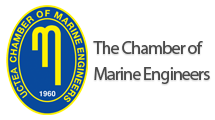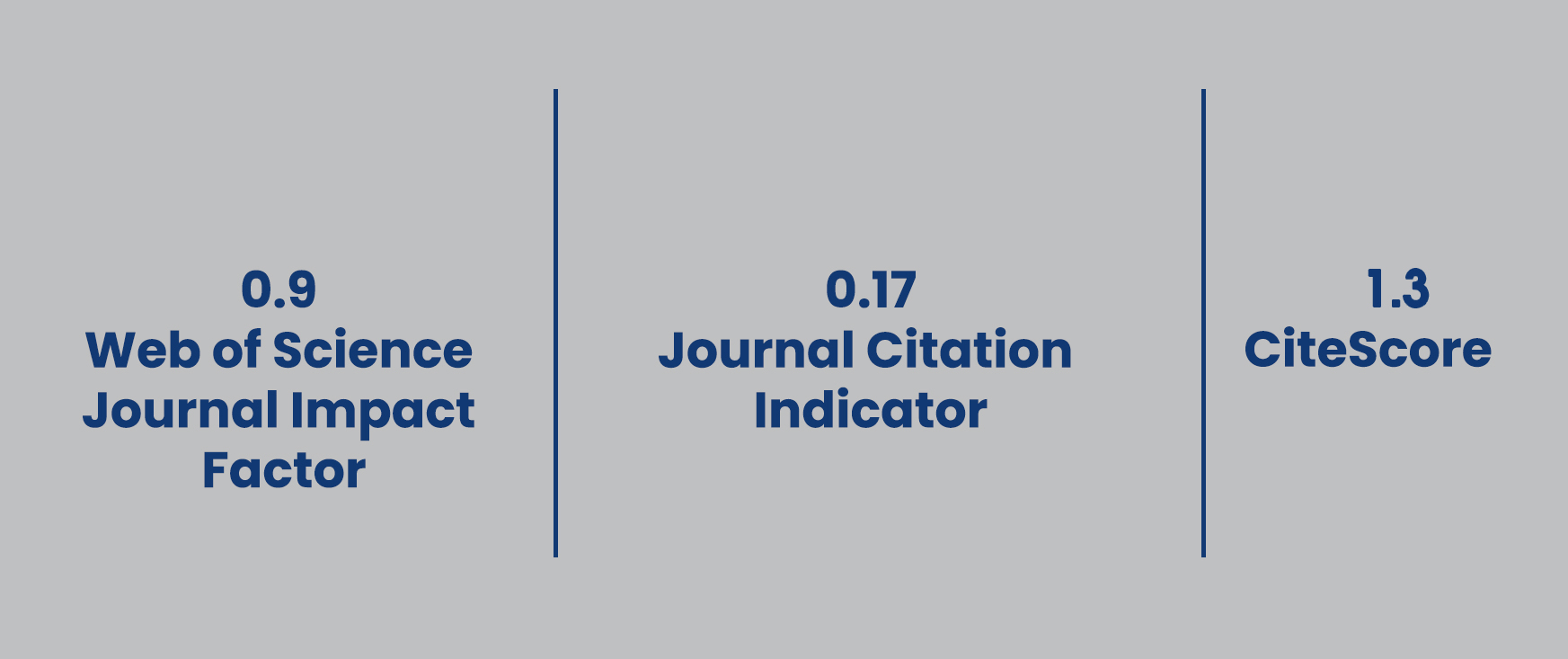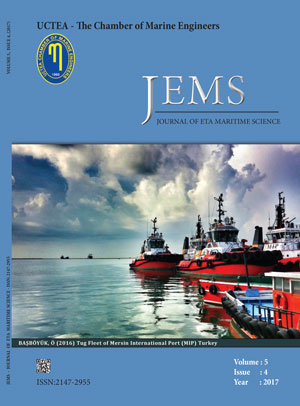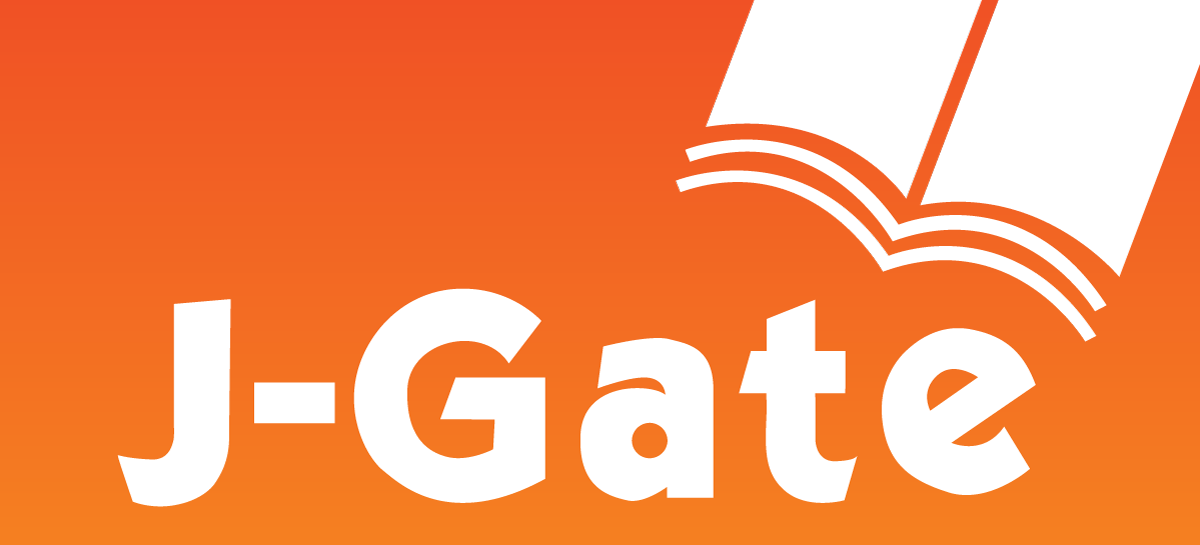
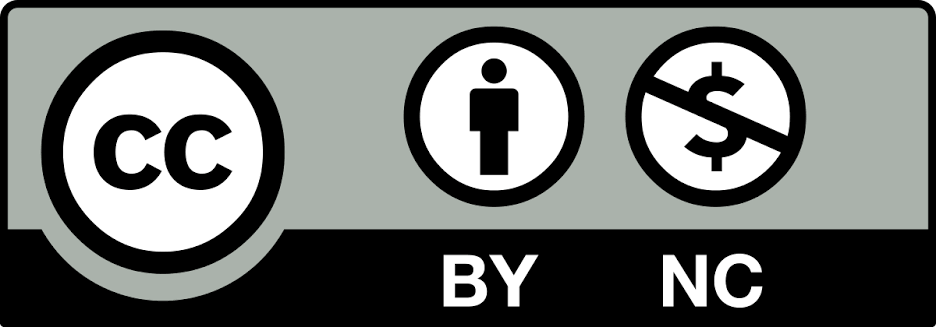
JEMS apply the Creative Commons Attribution NonCommercial 4.0 International Licence to all manuscripts to be published
ABSTRACTING & INDEXING
Volume: 5 Issue: 4 - 2017
| EDITORIAL (ED) | |
| 1. | Editorial Selçuk Nas doi: 10.5505/jems.2017.05925 Pages 312 - 313 Abstract | |
| FULL TEXT | |
| 2. | Journal of ETA Maritime Science (Volume: 5 Issue: 4, 2017) Pages 312 - 425 Abstract | |
| ORIGINAL RESEARCH (AR) | |
| 3. | Investigation of the Effects of Piston Geometry and Combustion Process Parameters on Engine Performance of Methane Fuelled Compression Ignition Engines with Kriging Method Halil Saraçoğlu, Oğuz Salim Söğüt doi: 10.5505/jems.2017.52824 Pages 314 - 321 In this study, the effects of piston geometry and combustion process parameters on the performance of methane burned dual fuel engines were investigated. For this purpose, three-dimensional computational fluid dynamics-based simulation modelling is combined with method of Design of Experiments (DOE) and Kriging metamodeling. AVL Fire 3-D CFD software was used in the modelling of dual fuel engine. Through the DOE method of Latin Hypercube Sampling efficient sampling points were determined in 6 dimentional parameter space. By Kriging metamodel, sufficient prediction results were obtained about the effect of piston geometry and combustion process parameters on engine performance. It has been found out that the proposed surrogate model is consistent with other approaches in the literature. Furthermore, it has been speculated that the results of this study will contribute to methane fuelled compression ignition engine studies related to performance enhancement. |
| 4. | A Static Output Feedback Controller Design for Reducing Vertical Acceleration of a Passenger Ship Hakan Yazıcı, Ferdi Çakıcı doi: 10.5505/jems.2017.18209 Pages 322 - 332 Being able to control vertical accelerations of a ship form in irregular seas is an important and current issue in terms of maritime. In this study, head waves scenario has been investigated for the passengers sitting at the bow part of the ship and a controller design has been implemented to guarantee that the calculated vertical acceleration values are below an upper limit. Ship motion calculations in irregular seas have been examined by using the Linear Superposition Principle. A linear mathematical model has been used to simulate 2-DOF coupled heave and pitch motions. In this study, considering that state variables for a ship in operation are not measurement available in practice, a static output feedback controller which uses easily measurable state variables are designed to mitigate the vertical accelerations of modeled disturbance waves induced ship. Finally, numerical simulation studies have been done to illustrate the effectiveness of the proposed control approach. |
| 5. | Investigation of Burnout Level of Turkish Seafarers: An Application on Fishing Vessel Seafarers Müge Büber, Ali Cemal Töz doi: 10.5505/jems.2017.59672 Pages 334 - 347 The aim of this research is to execute the burnout levels of fishing vessel seafarers employed in Izmir. The sample of the study is the fishing vessel seafarers. In this context, a face-to-face questionnaire method was applied to seafarers of fishing who keep fishing activities in fishermen's shelters in Izmir. In this study, it was observed that fishing vessel seafarers experienced moderate level of emotional exhaustion and depersonalization sub-dimension but felt a high level of personal failure. When the literature review was done, it was observed that there was no research on the determination of the burnout levels of fishing vessel seafarers. When evaluated in this respect, this study is aimed to determine the burnout levels of fishing vessel seafarers and this literature is important in terms of contributing to filling this gap. |
| 6. | Effect of Different Form Parameters on the Estimation of Submarine Resistance Abdi Kükner, Metin Kemal Gökçe, Ömer Kemal Kınacı doi: 10.5505/jems.2017.65487 Pages 348 - 360 Submarines which can change the direction of a war are unique units of a navy. Even little differences in naval technology between the sides provided great advantages to the superior side during the World War II. As small techological differences can have big advantages, the design stage of such critical watercrafts are of great significance. If the design stage of a submarine is successfully fulfilled in terms of hydrodynamic and technological aspects, low resistance at high velocities are achieavable, which makes submarines more effective. Submarine hull have conventional form types; parallel middle body, fore and aft body having smooth curves. In the present study, in order to get a better understanding of hydrodynamic characteristics of these watercrafts, 3 groups of bare hull submarine models which consist of different breadth to depth (B/D), breadth to length (B/L) and fore length to total length (Lf /L) ratios are created. For the numerical simulations of the model groups, a commercial RANSE based computational fluid dynamics code is used. The CFD methodology is first validated on a well known geometry whose experimental results may be found in the open literature. After the validation of the CFD method, the flow around all the submarine models are simulated using similar numerical techniques and the effects of different form parameters on the total resistance are presented. |
| 7. | A Simulation Aided Methodology Suggestion for Managing Emergency Evacuation Operation Under Engine Room Sourced Fire Conditions Peiman Alipour Sarvari, Emre Çevikcan, Metin Çelik, Alp Ustundag doi: 10.5505/jems.2017.77699 Pages 362 - 385 More crowded groups of people gathers in passenger ships as a result of increasing demand and variety of navigation. Supporting marine emergency evacuation via effective planning has a vital importance for passengers and crew. The objective of the study is to provide contribution for performing evacuation in a safe and fast manner by means of evaluating scenarios including different passenger factors and engine room sourced fires. Within this framework, this study adds value to the relevant literature by proposing a holistic methodology including a novel passenger routing systematic. Within this methodology, information about demographic and physical attributes of passengers was obtained by means of questionnaire. Then, the simulation of ship emergency evacuation under engine room fire conditions was performed via Maritime EXODUS V5.1 and SMARTFIRE V4.3. The effects of evacuation factors were determined by making statistical analysis on simulation results. The methodology is applied at a ferryboat via the consideration of real life working conditions. The results demonstrate the effectiveness of the proposed routing systematic. |
| 8. | Calculation of Ship Wave Bending Moment in Irregular Seas Ertekin Bayraktarkatal doi: 10.5505/jems.2017.87587 Pages 386 - 395 In this article, wave bending moments which can be encountered in different wave conditions are calculated for a typical bulk carrier and compared with the values recommended by IACS. First, wave bending moments in regular waves are calculated by software based on strip theory. Semi-empirical methods are used for hog / sag correction due to the linearity of this theory. Wave bending moment transfer functions calculated at regular waves are combined with appropriate wave spectra in the context of linear superposition principle to calculate wave bending moment values in short term sea conditions. For long-term wave bending moments, the wave statistics for the sea area in which the ship will operate are utilized and the highest wave bending moment value expected to meet the ship's life is determined. The wave bending moment values calculated in this way are compared with the values recommended by IACS. |
| 9. | A Study on Safety and Risk Assessment of Dangerous Cargo Operations in Oil/Chemical Tankers Cenk Şakar, Yusuf Zorba doi: 10.5505/jems.2017.09226 Pages 396 - 413 The safety and risk assessment of dangerous cargo operations in oil and chemical tankers is a necessary process to prevent possible accidents during these operations. Fire and explosion are the major accidents encountered in tanker operations. In this study, a model was constructed through the Fuzzy Bayes Network Method for the probabilistic relationships between the causes of fire and explosion accidents that could occur during the tank cleaning process. The study is composed of two stages. Firstly, the variables that are the subject of the problem and that constitute the graphical structure of the Bayes Networks are identified. Then, expert opinion was sought as the statistical data on accident reports were not recorded properly while identifying the conditional probability of the relationships between the variables. Linguistic variables whose fuzzy membership functions were identified were used in detecting the probabilities. The findings of the sensitivity test revealed that the major reasons that could lead to fire and explosion during the tank cleaning process are ignition sources, reaction and safety culture. |
| 10. | Comparative Analysis of Dangerous Liquid Cargoes Transportation: A Study on Bulk Chemicals and Tank Containers Ozan Bayazit, Yusuf Zorba doi: 10.5505/jems.2017.83997 Pages 414 - 425 Dangerous liquid bulk cargo transportation by sea is a controlled and managed operation through a lot of regulations due to transported cargoes involved which require a high level of attention. Chemical tankers and tank containers are two of the most common transportation ways of transporting dangerous liquid bulk cargoes by sea. While some of the liquid bulk chemical traders transport their cargoes either in chemical tankers or tank containers, the others use both of them. At this point, the factors which affect the choice of mentioned transportation ways and their levels of effects on selection are of great importance and need to be thoroughly studied. In this study, the factors that affect the selection of chemical tankers or tank containers by Turkish chemical companies are determined through a comprehensive literature review. In order to determine to what extent these factors are important and their effects on alternatives, a questionnaire prepared in compliance with AHP method was conducted through the import departments of 30 Turkish chemical companies. As a result, when the effect degrees of the factors were evaluated, it has seen that the chemical tankers are 62.5 % more preferable than the tank containers. |
